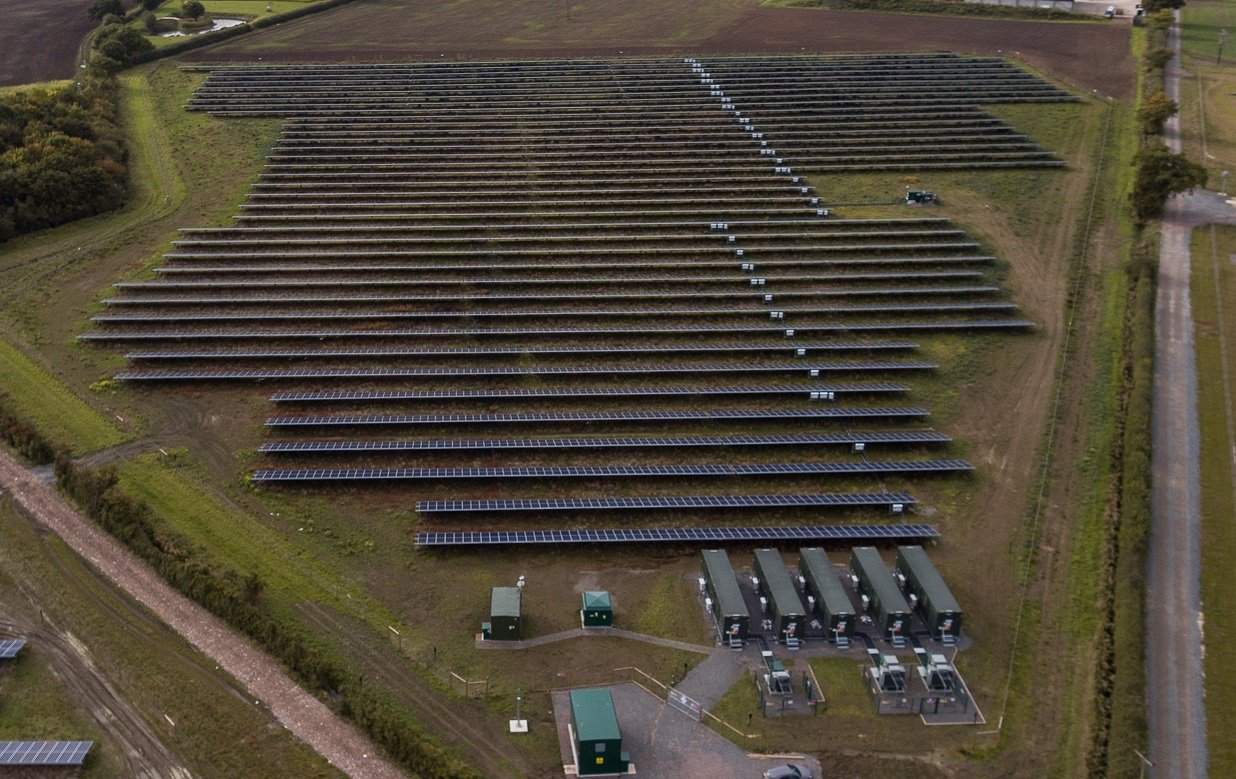Driven by technological advances, facilities are being built with storage systems that can hold enough renewable energy to power hundreds of thousands of homes. The advent of “big battery” technology addresses a key challenge for green energy — the intermittency of wind and solar.
The twin smokestacks of the Moss Landing Power Plant tower over Monterey Bay. Visible for miles along this picturesque stretch of the Northern California coast, the 500-foot-tall pillars crown what was once California’s largest electric power station — a behemoth natural gas-fired generator. Today, as California steadily moves to decarbonize its economy, those stacks are idle and the plant is largely mothballed. Instead, the site is about to begin a new life as the world’s largest battery, storing excess energy when solar panels and wind farms are producing electricity and feeding it back into the grid when they’re not.
Inside a cavernous turbine building, a 300-megawatt lithium-ion battery is currently being readied for operation, with another 100-megawatt battery to come online in 2021. Together, they will be able to discharge enough electricity to power roughly 300,000 California homes for four hours during evenings, heatwaves, and other times when energy demand outstrips supply, according to project developer Vistra Energy.
These aren’t the only super-sized batteries that will soon be operating at the Moss Landing plant. An additional 182.5 megawatts produced by 256 Tesla megapack batteries are scheduled to begin feeding into California’s electric grid in mid-2021, with plans to eventually add enough capacity at the site to power every home in nearby San Francisco for six hours, according to the Bay Area utility, Pacific Gas & Electric, which will own and operate the system. Elsewhere in California, a 250-megawatt storage project went online this year in San Diego, construction has begun on a 150-megawatt system near San Francisco, a 100-megawatt battery project is nearing completion in Long Beach, and a number of others are in various stages of development around the state.
California is currently the global leader in the deployment of high-capacity batteries.
Driven by steeply falling prices and technological progress that allows batteries to store ever-larger amounts of energy, grid-scale systems are seeing record growth in the U.S. and around the world. Many of the gains are spillovers from the auto industry’s race to build smaller, cheaper, and more powerful lithium-ion batteries for electric cars. In the U.S., state clean energy mandates, along with tax incentives for storage systems that are paired with solar installations, are also playing an important role.
California is currently the global leader in the effort to balance the intermittency of renewable energy in electric grids with high-capacity batteries. But the rest of the world is rapidly following suit. Recently announced plans range from a 409-megawatt system in South Florida, to a 320-megawatt plant near London, England, to a 200-megawatt facility in Lithuania and a 112-megawatt unit in Chile.
The mass deployment of storage could overcome one of the biggest obstacles to renewable energy — its cycling between oversupply when the sun shines or the wind blows, and shortage when the sun sets or the wind drops. By smoothing imbalances between supply and demand, proponents say, batteries can replace fossil fuel “peaker” plants that kick in for a few hours a day when energy demands soar. Experts say that widespread energy storage is key to expanding the reach of renewables and speeding the transition to a carbon-free power grid.
“Energy storage is actually the true bridge to a clean-energy future,” says Bernadette Del Chiaro, executive director of the California Solar and Storage Association.
How quickly that future arrives depends in large part on how rapidly costs continue to fall. Already the price tag for utility-scale battery storage in the United States has plummeted, dropping nearly 70 percent between 2015 and 2018, according to the U.S. Energy Information Administration. This sharp price drop has been enabled by advances in lithium-ion battery chemistry that have significantly improved performance. Power capacity has expanded rapidly, and batteries can store and discharge energy over ever-longer periods of time. Market competition and rising battery production also play a major role; a projection by the U.S. National Renewable Energy Laboratory sees mid-range costs for lithium-ion batteries falling an additional 45 percent between 2018 and 2030.
Read more: Yale Environment 360




